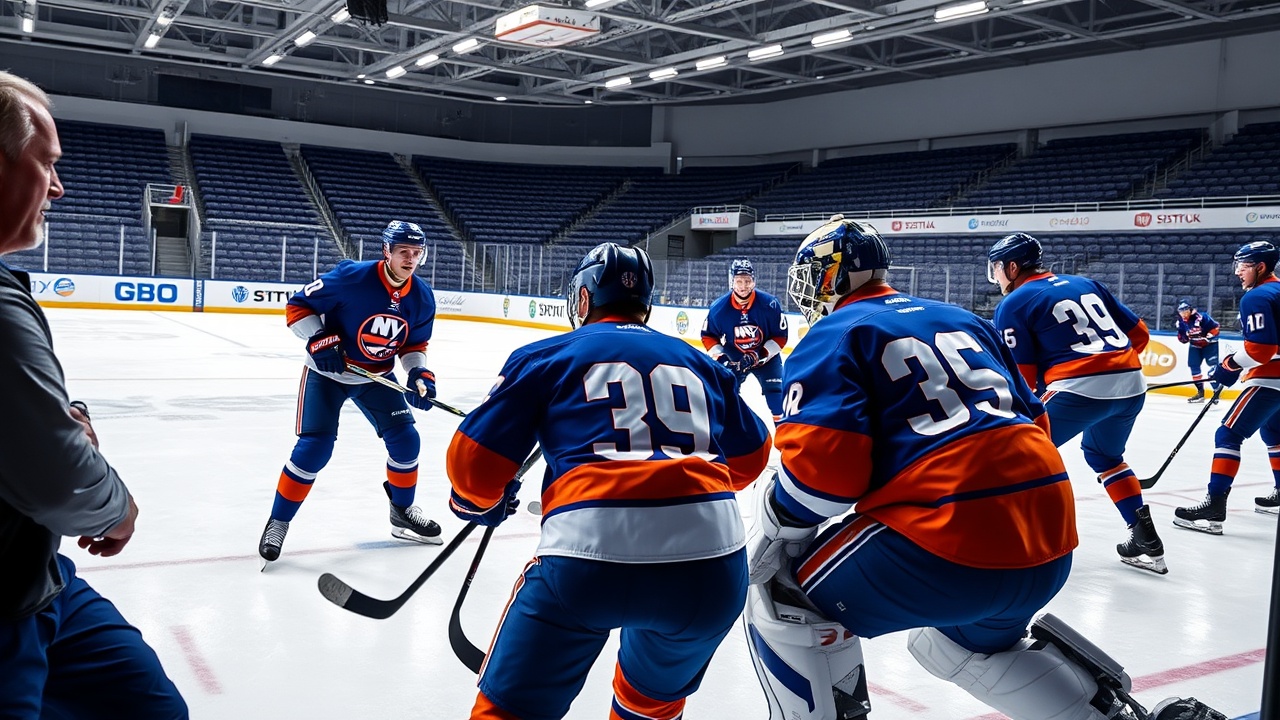Introduction
As the New York Islanders brought Bob Boughner on board to oversee their defense and penalty-killing units, he quickly faced a formidable challenge. The team’s defense had allowed an average of 3.13 goals per game during the 2024-25 season—not a catastrophic figure by any means, but concerning given that the offense was only managing 2.71 goals per contest. This lack of scoring made the defensive shortcomings particularly hard to mask.
Penalty Kill Performance
More alarmingly, the Islanders’ penalty kill ranked second-to-last in the NHL, successfully defending against only 72.2% of power plays. Analysts suggest that if Tommy Albelin‘s unit had improved their efficiency by even 10%, the Islanders might have been able to secure a playoff spot. Key contributors to the penalty kill last season included players like Ryan Pulock (159:33 minutes), Jean-Gabriel Pageau (135:34), and Alexander Romanov (122:30), among others. Meanwhile, forwards Casey Cizikas and Brock Nelson contributed limited minutes to the effort.
Season Progression
Fast forward to this season, Boughner has maintained a similar roster for the penalty kill, though the outcomes have dramatically shifted. After a rocky start where they conceded at least one power-play goal in eight of their first nine games, the penalty-killing unit has redefined its game since October 30. Over the last seven games, they have achieved an impressive 90% success rate by successfully denying 18 out of 20 power plays.
Critical to this turnaround are returning stalwarts Pulock and Adam Pelech as the primary defensive pairing backed by a revamped lineup featuring forwards Pageau, Holmstrom, Horvat, and Palmieri. In contrast, Cizikas—who has struggled to regain his rhythm this season—has seen his role decrease significantly, logging only 2:05 on the penalty kill thus far.
Key Changes and Improvements
One key change has been the heightened aggressiveness of the penalty kill, as they have focused on preventing opponents from entering the slot and maintaining better coverage in front of the net. This bolstered framework has notably benefitted goaltender Ilya Sorokin, who has seen his performance improve. Last season, he recorded a paltry .847 save percentage when his team was shorthanded, but that has risen to .852 overall this season, and an impressive .923 since late October.
Looking Ahead
With the Islanders currently averaging 3.31 goals per game—a figure that, if sustained, would provide sufficient firepower to alleviate pressure on the penalty kill—there’s potential for the team to transform this aspect from weakness to strength. The road ahead is demanding, as their next five opponents feature a range of power-play efficiencies: 22.6% (Vegas Golden Knights), 16.3% (Utah Hockey Club), 17.5% (Colorado Avalanche), 32.8% (Dallas Stars), and 18.9% (Detroit Red Wings).
Starting their road trip with a 2-0 record, the Islanders’ penalty kill has begun to show resilience, having effectively killed 5 of 6 penalties. As they continue this journey, it remains to be seen whether this momentum can be sustained against tougher competition.




